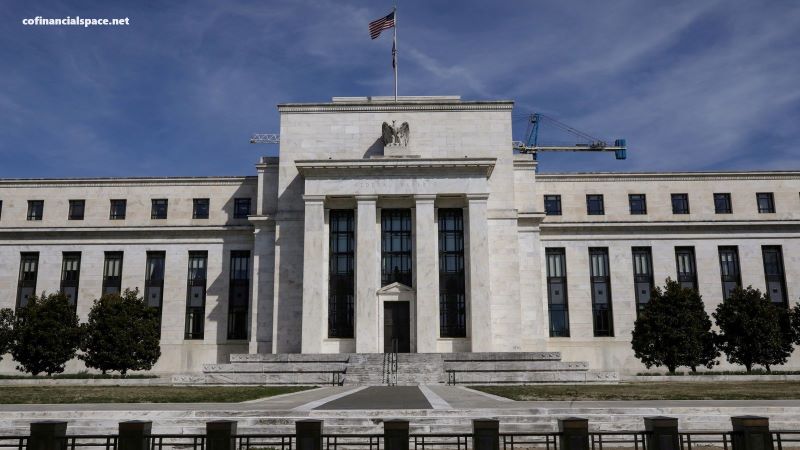Economy
Federal Reserve Hints at Rate Cuts Amid Inflation Progress
On Wednesday, Federal Reserve officials decided to maintain the current interest rates, signaling a cautious approach to potential future reductions. This decision came after careful consideration of the ongoing battle against inflation, and it marks a pivotal moment as the Fed navigates the delicate balance between controlling inflation and supporting economic growth.
Adjustments Reflecting Inflation Progress
In their policy statement, officials made two significant adjustments highlighting recent advancements in inflation control. They suggest a possible shift towards rate cuts. Describing inflation as somewhat elevated represents a notable downgrade, indicating progress. Additionally, the Fed’s statement emphasized they are now able to consider both aspects of their mandate. Maintaining low and stable inflation alongside robust labor markets is now possible on a more balanced basis.
The Fed’s shift towards potential rate cuts shows confidence in improved inflation control and balanced growth, according to wsj login.
Dual Mandate Focus
“The committee is attentive to both sides of its dual mandate,” the statement read. This marks a departure from previous language, which highlighted policymakers as highly attentive to inflation risks. The change suggests inflation may no longer be a significant barrier to reducing rates. This is especially true if the labor market continues to show signs of cooling.
Benchmark Rate and Economic Resilience
In July 2023, the Federal Reserve raised its benchmark rate to approximately 5.3%, the highest in two decades. Since then, the focus has shifted to the timing of potential rate cuts. The economy has demonstrated resilience, with GDP growing at a 2.1% annual rate in the first half of the year. While inflation remained high in the first quarter, recent data indicates a slowdown in price growth. This suggests that the efforts to control inflation are gaining traction.
Industry-Specific Impacts
Various sectors are experiencing the effects of the Fed’s interest rate policies. For instance, McDonald’s reported a nearly 1% decline in sales from the previous year, reflecting challenges in the restaurant industry. Similarly, Brunswick, the world’s largest maker of pleasure boats, saw a 15% drop in revenues in the second quarter, attributing sluggish demand to higher interest rates.

Economic Potential, Swift Health Progression
Economic Potential Amid the dominance of artificial intelligence (AI), investor attention is shifting towards revolutionary…
Labor Market Dynamics
The labor market is also adjusting to the new rate environment. The ratio of job openings to unemployed workers decreased to 1.2 in June, down from a high of 2 in March 2022. Layoffs remain low, but hiring rates have declined, with the unemployment rate edging up to 4.1% in June from 3.7% earlier in the year. Additionally, wage growth is cooling, with private-sector wages and salaries growing by 0.8% in the second quarter, the smallest increase since 2020.
Housing and Mortgage Markets
Higher interest rates have put pressure on the housing market. The number of housing units under construction plateaued in 2022, and residential construction turned negative earlier this year, down nearly 8% in June from a year earlier. Despite a recent decline in mortgage rates below 7%, demand for new mortgages has not increased, according to the Mortgage Bankers Association.
Political and Business Reactions
The high stakes of the Fed’s decisions have elicited varied reactions from political and business leaders. Democrats are concerned that high interest rates are dampening consumer sentiment and fear that delaying rate cuts could harm the strong labor market. Bharat Ramamurti, a former economic adviser to President Biden, suggested a significant rate cut if reductions are not made soon. On the other hand, some business leaders, like Frank Sorrentino of ConnectOne Bank, believe that businesses have adapted to the current rate environment and are less concerned about the timing of rate cuts.
Conclusion
As the Federal Reserve navigates the complex economic landscape, their recent decisions and statements reflect a cautious yet optimistic outlook. The potential for rate cuts looms on the horizon, contingent on continued progress in inflation control and labor market dynamics. The coming months will be crucial in determining the Fed’s next steps in fostering a balanced and stable economic environment.
Get a 2-year WSJ and Barron’s subscription for unlimited access on iOS, Android, PC, and Mac. Enjoy insights from WSJ’s Peggy Noonan, Barron’s stock picks, WSJ Live TV, audible articles, and Barron’s magazine. Subscribe today!

